The Six Paramitas, the Liberating Actions: a Complete Buddhist Path for Modern Living: Generosity, Discipline, Patience, Diligence, Meditation, Wisdom
In modern life, distractions overwhelm us from the moment we wake up until we go back to sleep. We are bombarded with visual, auditory, and sensory information, making focus difficult.
In ancient times, it was perhaps easier to find distraction-free moments to practice mindfulness, especially for monks and yogis. Therefore, many masters and gurus achieved their realization by devoting body and mind to the practice of meditation.
Feature by Esmeralda Triskel
Shantideva — who was inspired by Manjushri himself — composed a series of verses known today as Bodhisattvacaryāvatār, translated as the Guide to the Bodhisattva’s Way of Life. He makes a series of reflections and recommendations aimed at gradually achieving the full state to which most Buddhist practitioners aspire. It is based on living under “ethical” principles, developing “bodhicitta” and putting them into action thanks to the Six Paramitas, also called in other texts The Six Liberating Actions.
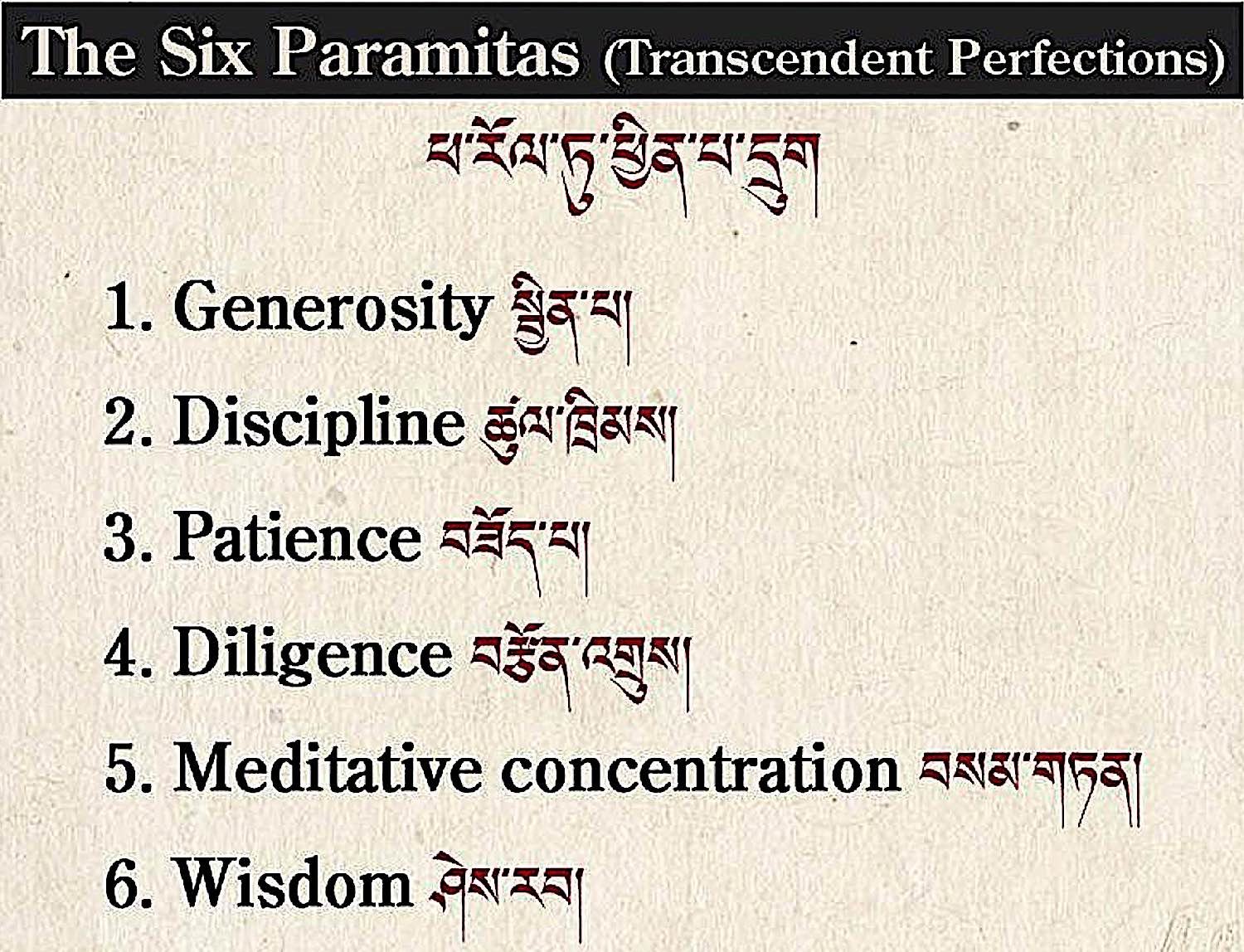
These six Paramitas (Sanskrit in brackets)are:
(1) generosity (dāna): for a feature on Generosity, see>>
(2) morality (śīla) — for a feature on Morality, see the Eightfold Path>>
(3) patience (kṣānti) — for a feature focused on Shantideva’s “Patience and Bodhicitta” see>>
(4) diligence or vigor (vīrya) — for inspiration on diligence, see classic biographies such as Milarepa’s life>>
(5) concentration (meditation) (dhyāna) —
(6) wisdom (prajñā) — i.e. Prajnaparamita, as in the sutra or the Wisdom Mother>>
A key practice that exemplifies the six paramitas is “Taking Refuge” and the “Four Immeasurables” — a daily practice for most Buddhists. At the heart of Mahayana and Vajrayana Buddhist practice is “Taking Refuge in the Buddha, the Dharma and the Sangha” — the Three Jewels — combined with the Four Immeasurables and Bodhichitta. Listen or chant along with the magnificent voice of Yoko Dharma as she sings this sacred prayer and mantra:
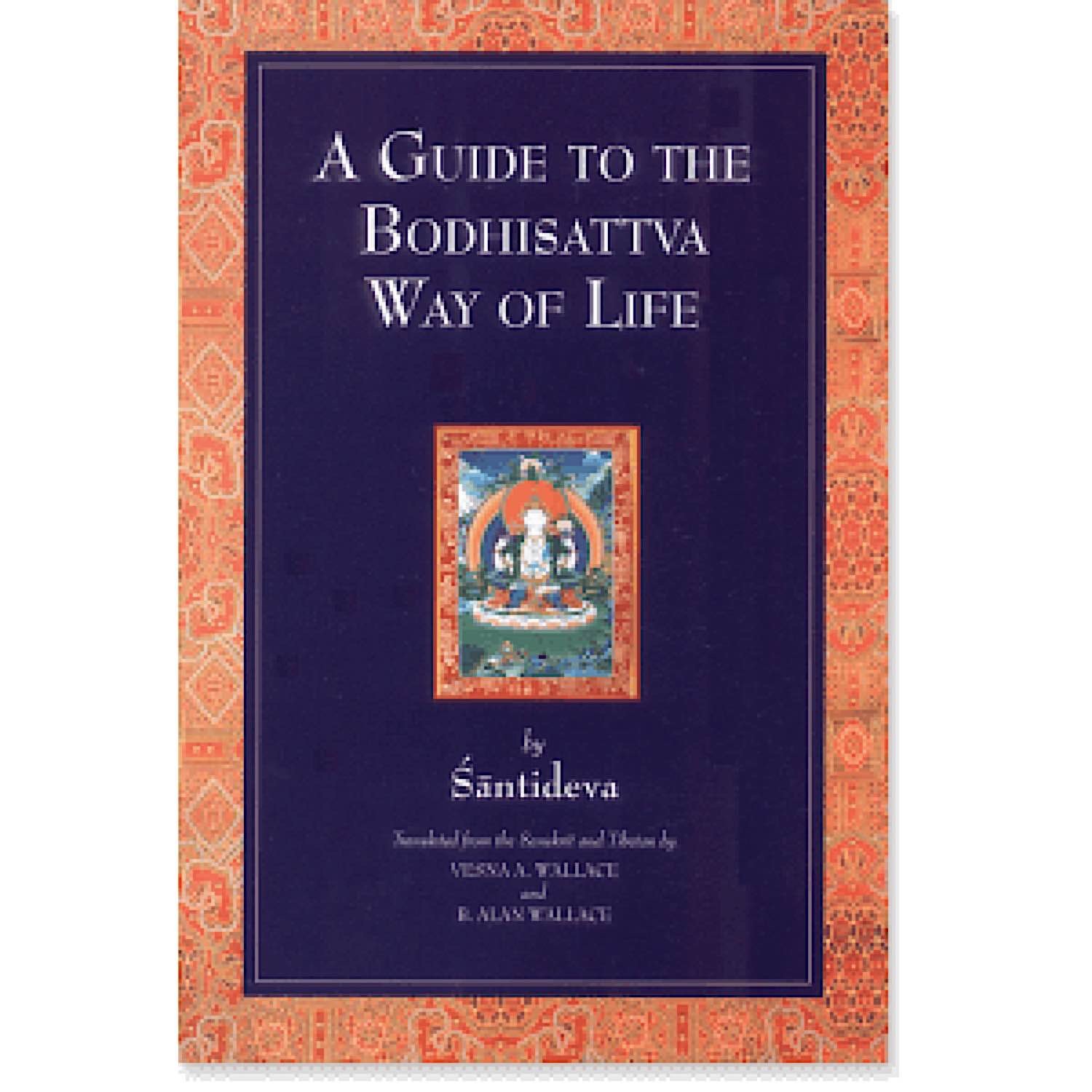
Karma, Ethics and Bodhicitta
Before discussing the Six Liberating Actions, it is important to understand karma. Ethics in Buddhism inevitably refers to Cause and Effect, and karma. Ethical principles mean to live mindfully, watchful of every thought, word, or action — whether positive or negative — and its consequence in the short, medium, or long term. Consequences are generated by every action. By keeping karma in mind, it becomes natural to practice compassion in daily life. [For a feature “Karma is not fate, see>>]
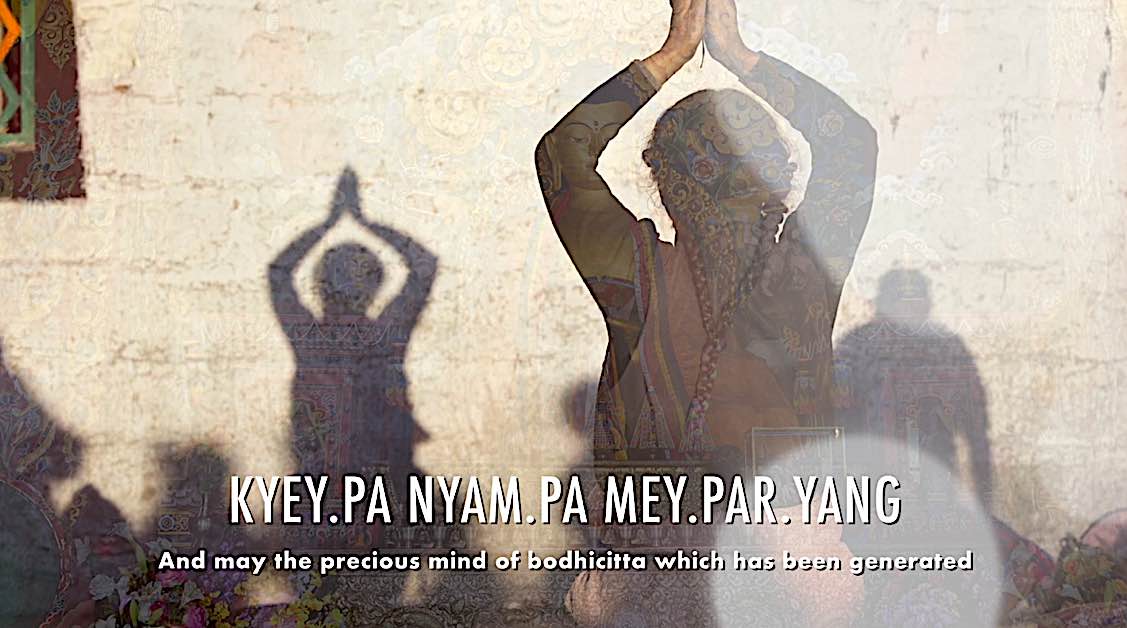
Part of the Dedication prayer in some Tibetan Buddhist practices: “May the mind of Bodhichitta which has been generated always increase…” Bodhichitta Mind is fundamental to Mahayana Buddhist practice.
Bodhicitta
Bodhicitta (usually pronounced Bodhichitta) refers to a deep desire to achieve awakening to benefit all beings. And as a coin has two sides, so bodhicitta on the one hand its absolute aspect is the very desire to attain and awakening and, on its relative side, putting that desire into practice: desiring and executing. [For a feature on Bodhichitta, see>>]
Buddha was a man of action and attainment, who not only attained Enlightenment (the “other shore”) but also extensively taught us how we ourselves could attain these realizations:
“Do not wait for the other shore to come to you. If you want to cross to the other shore, the shore of security, well-being, no fear and no anger, you have to swim or paddle. You have to make an effort.”
One guide to the path is the Six Paramitas: Generosity, Discipline, Patience, Diligence, Concentration, Wisdom.
Four Immeasurables practice — Love, Compassion, Joy, Equanimity — embodies the perfection of Bodhicitta:
Paramita
Paramita means Perfection — the noblest, most excellent, highest qualities.
It symbolizes the crossing from the shore of confusion and suffering to the shore of liberation and enlightenment. It groups the six actions to be performed to reach a state of realization.
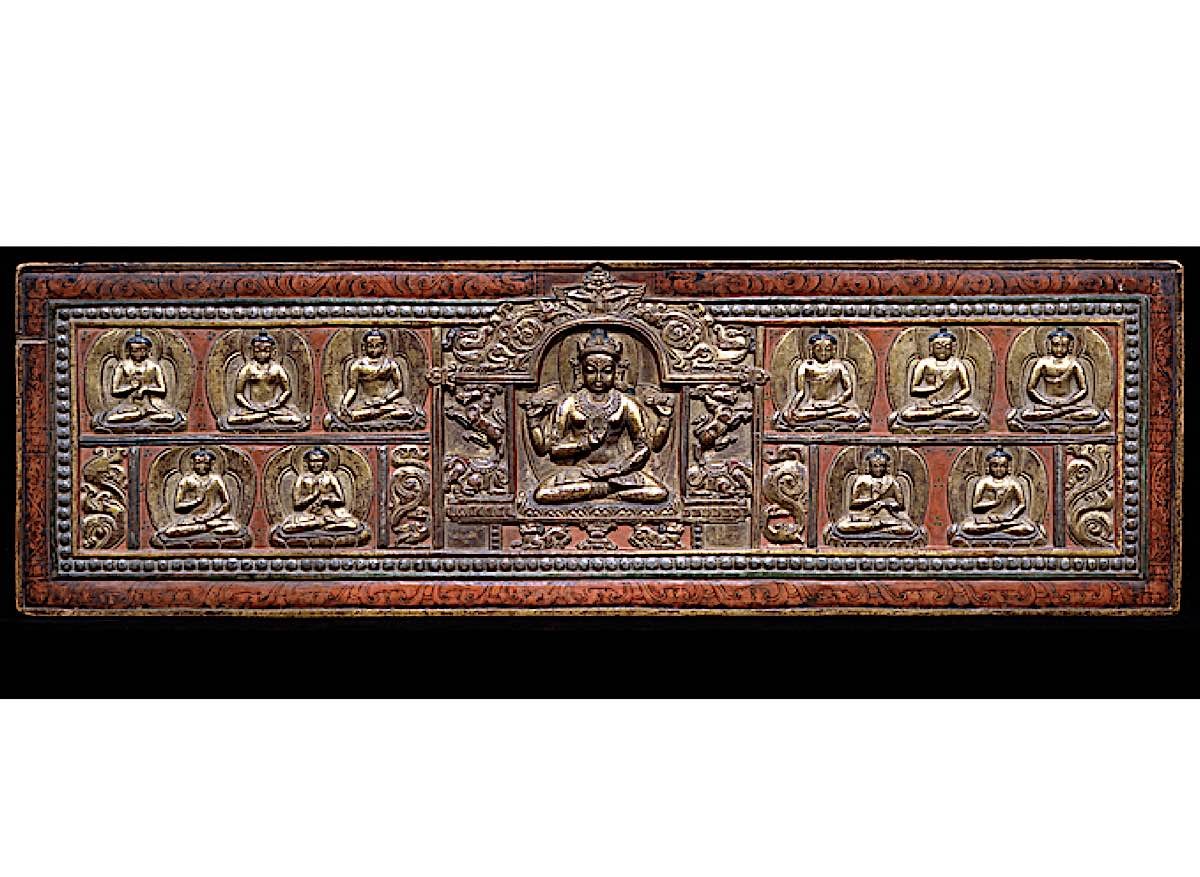
Generosity Paramita
The first is about GENEROSITY, a generosity with no hidden agendas: no expectation of reward or gaining fame. But it is not only about providing sustenance and shelter to those in need of material support. It also encompasses giving protection and support to those who are in danger or prey to fears and doubts through guidance and advice. Listening is a manifestation of generosity. In the Dharma path, it involves giving and sharing teachings.

Discipline Paramita
No less important is DISCIPLINE, and this is to lead an ethical life, good behavior on a social level, working for the common good. At the internal level, it invites self-control, getting rid of vices and bad habits that can generate distraction. It emphasizes the practice of concentration. The Five Precepts (for Lay People) and the Eight Precepts (for monastics) are an expression of discipline and the eightfold path helps define good disciple>>
The Eightfold Path:
- right understanding
- right thought
- right speech
- right action
- right livelihood
- right effort
- right mindfulness
- right concentration.
To be Disciplined means to live this path — not simply to understand it.
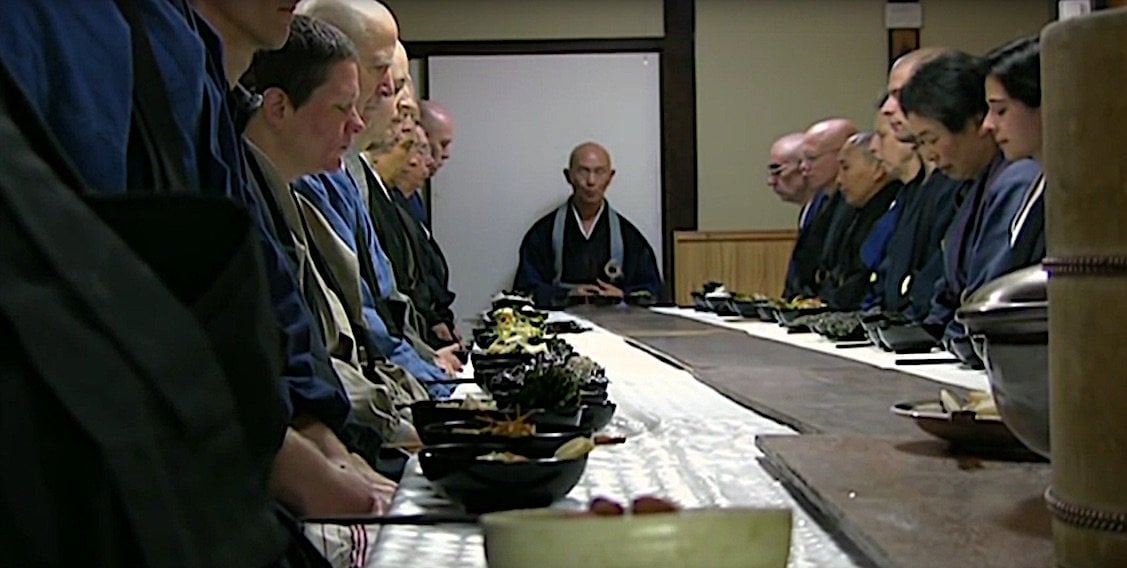
Patience Paramita
PATIENCE is a word we hear every day and it becomes the third Paramita. It is not only about generating great tolerance, but also about avoiding anger at all costs. Anger is a fuel capable of burning mountains of accumulated positive karma in moments, so it should be avoided by all means. Another similar poison is hatred.
Three types of patience are described:
- The patience that allows us to accept the inevitable suffering when we are afflicted by afflictions, such as illness, bereavement, family problems, etc.;
- The patience that prevents resentment and thoughts or activities of revenge;
- The patience that helps us to overcome the ups and downs and frustrations of practice.

Diligence Paramita
Next is DILIGENCE whose meaning is to persevere with joy, to do things with enthusiasm. Its main obstacle is laziness and apathy. In fact, in Christianity there is a saying: “Against laziness, diligence”.
We find three types of laziness: the laziness of procrastination, leaving things for tomorrow and, surely tomorrow we will do the same. The laziness of attachment to trivial matters, trivial conversations, watching TV for hours and the like, because they are easier than sitting and meditating. And the third type, the laziness of the delusion of inability, feeling incapable, that something is far beyond our circumstances, giving up without even trying. It is a feigned humility that hides behind great laziness.

In this sense, Shantideva leads us to reflect on the disadvantages of wasting life and that will be evident at the moment of death, so he encourages us to persevere in the practice with enthusiasm. For this he recommends four supports to develop diligence (or perseverance): aspiration and conviction in the benefits of the Dharma; confidence in oneself and in the Buddha nature; rejoicing in our achievements, self-satisfaction; and rest, knowing when to rest, not overexerting ourselves or forcing ourselves to meditate if we are in a bad mood or very tired.
Concentration Paramita
The fifth Paramita speaks of Concentration — in modern terms we might say meditation — and consists of two aspects. The first is known as Samatha and is the practice of concentration in the present moment, the here and now, using various methods, such as: focusing on conscious breathing, on steps while walking, on each movement executed by the body, or just the “present moment.” For a feature on Samatha, see>>

The second, called Vipassana, reached after calming the mind, overcoming external and internal distractions. It is to deepen the experience of the Buddha Nature of our mind. For a feature on Vipassana, see>>
Wisdom Paramita
As a result of all the above, we find the sixth Paramita, WISDOM, or more specifically, the PERFECTION OF WISDOM — Prajnaparamita.
There are extensive texts and treatises that explain this teaching in-depth. There are several wisdom sutras, the Prajnaparamita Sutras, the shortest of which is the wonderful Heart Sutra. [For a video feature on Heart Sutra, see>>]

The Wisdom Paramita includes two types of wisdom: the mundane, based on the intellectual knowledge that we have accumulated through the information obtained through our senses — what we have learned from our parents, teachers, school, studies, etc. This type of wisdom is based on the dualistic perception of external and internal phenomena. In spiritual practice, this can also include our Sadhanas and visualized meditations, or Generation Practices.
The other type of wisdom, supramundane wisdom is the one that develops from deepening meditation practice — by perceiving the true nature of phenomena. Duality is dissolved by recognizing non-separation. It is the prelude to the ultimate realization: Mahamudra.

Six Paramitas in Daily Life
You can probably see how these Perfections help us to build a strong Buddhist Practice, but the Six Paramitas can easily become practical tools to use in our daily life.
Buddha taught “right living” as a precept. By applying the Six Paramitas to even the most mundane aspects of our daily life, we can make progress on the path, mitigate our negative karma, generate merit — and even use the Six Perfections as a method to perfect our “business offering” Here’s an example of applying the Six Paramitas to a new business idea, for example:
GENEROSITY: Thinking in terms of generosity, of “helping” — for example, creating environmentally friendly products — can arise out of our spirit of generosity.
DISCIPLINE: Of course all business ventures require discipline, but here we can go beyond the creative to build our service or product with all the Paramitas in mind, and especially ethics and offering a good service. By building a Buddhist ethic into your business venture, with the Precepts in mind, your venture will contribute not only to your well-being, but to the benefit of all beings.
PATIENCE: Applying the Perfection of Patience gives us the fortitude to work for the long term goals, as well as short term.
DILIGENCE: This Perfection pushes us to persevere in spite of the obstacles that may appear along the way and not to give up or get discouraged. It includes transforming or adapting the plan if necessary.
MEDITATION: More and more, in business, people take “meditation breaks.” It’s during these short mental breaks, we learn to analyze the facts: metrics and results obtained, to make changes and plan the next strategies.
WISDOM: “Experience” is a great teacher in life and business. Treat every obstacle as a learning experience. Develop wisdom. By following the precepts, and Buddhist principles, our Business will flourish and grow.
The Buddhist teachings are an inexhaustible source of wisdom that applies to all aspects of our lives, not just our evening meditation practices. Taking advantage of them in our daily lives, beyond the cushion and the mala, will bring countless benefits to us and to those around us.
More articles by this author

Who is my Enlightened Life Protector Based on Tibetan Animal Sign Zodiac in Buddhism? According to Mewa, Mahayana tradition and Kalachakra-based astrology (with Mantra Videos!)

4 Guardians of the World and Dharma: the Watchers of the World: the Four Heavenly Kings in Buddhism, Their Mantras and Practice
Search
Latest Features
Please support the "Spread the Dharma" mission as one of our heroic Dharma Supporting Members, or with a one-time donation.
Please Help Support the “Spread the Dharma” Mission!

Be a part of the noble mission as a supporting member or a patron, or a volunteer contributor of content.
The power of Dharma to help sentient beings, in part, lies in ensuring access to Buddha’s precious Dharma — the mission of Buddha Weekly. We can’t do it without you!
A non-profit association since 2007, Buddha Weekly published many feature articles, videos, and, podcasts. Please consider supporting the mission to preserve and “Spread the Dharma." Your support as either a patron or a supporting member helps defray the high costs of producing quality Dharma content. Thank you! Learn more here, or become one of our super karma heroes on Patreon.
Lee Kane
Author | Buddha Weekly
Lee Kane is the editor of Buddha Weekly, since 2007. His main focuses as a writer are mindfulness techniques, meditation, Dharma and Sutra commentaries, Buddhist practices, international perspectives and traditions, Vajrayana, Mahayana, Zen. He also covers various events.
Lee also contributes as a writer to various other online magazines and blogs.
















